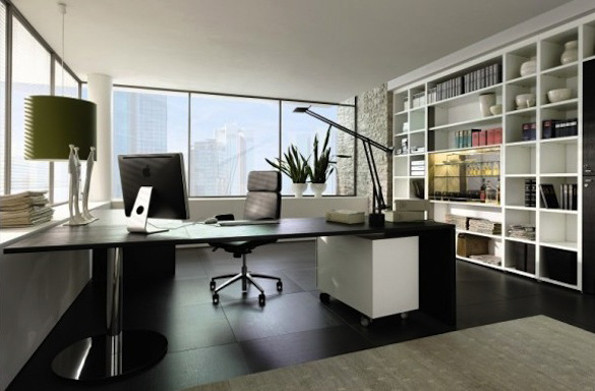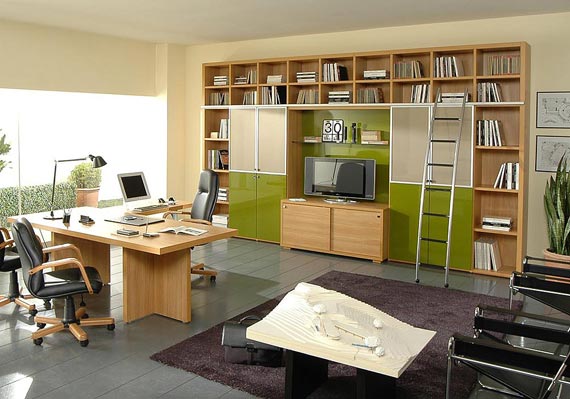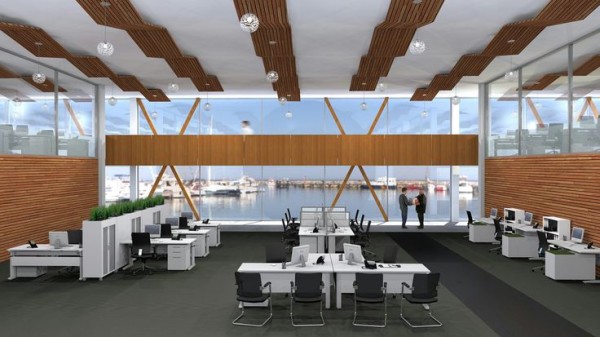
Now that you have written down some SMART (Specific, Measurable, Achievable, Realistic and Time-Bound) goals for yourself, both personal and business, let’s work on optimizing your surroundings and increase your ability to work effectively.
The actions you take to organize and streamline your office, get rid of clutter and maximize your workspace for productivity will save you money and time. A disorganized office costs more to run. Supplies, tools and equipment go missing because nothing is organized or put away properly. Those things have to be replaced to get the job done, plus, you spend valuable time searching for missing items, files or paperwork.
In fact, some studies have revealed that the average senior business leader spends nearly four weeks each year navigating through messy or cluttered desks, looking for lost information. Does that sound like productive time to you?
Benefits of taking the time to create an organized and well-structured office include:
> Better communication. An organized office environment encourages better internal communication. With a central area for staff communication, it is easier to share sales news, track targets, and plan and monitor projects.
> A manageable budget. Organized spaces will allow you to quickly see what you have, what you need, and when you might need more. This supports the creation and sustaining of budgets, especially for supplies and equipment.
> Increased work ethic and morale. When you and your staff take care of your surroundings, it makes the workplace a more pleasant place. Taking care shows that you value your work and the people who work for you.
> Better time management. You spend less time looking for things and more time actually working.
Get started by walking through this step-by-step workplace audit, and making necessary improvements as you go.
Complete the following steps by literally walking around your office with a notepad and making observations. This is intended to be a positive exercise, so try not to get overwhelmed. Small changes are the best changes to start with.
Start with your own office.
What can be found on your desk?
Where are your current files located?
Where are your old or inactive files?
How many personal items are visible?
What is on the walls?
Where are your office supplies?
How much paper is on your desk?
How many files, binders or books are on your desk?
Where are your inbox and outbox located, and how much is piled in them?
Would your office benefit from a better layout?
A better filing system?
A smaller desktop monitor?
A paper shredder?
Clear your desk of everything but your computer, your Day-Timer, your current files, your inbox and your telephone. Depending on the size of your desk, you may wish to put your current files or inbox on top of a filing cabinet within arm’s reach to maximize desk space. Anything you don’t need on a regular basis should be stored out of arm’s reach.
Choose one central system for managing your notes, tasks, to-do lists, brainstorming and scheduling. If you have a Day-Timer, use it. If you prefer electronic systems, use those. Having too many binders, notepads and calendars gets confusing.
Make a habit of tidying your desk at the beginning and end of each day. Keep loose papers pinned to your to-do list, or have clear and organized folders. Use drawer organizers to keep your stationery drawer clean and easily accessible.
Organize your loose paper, inbox and action items in a file sorter or stack of paper trays. Use categories like to do, to review, awaiting response, on hold and to file.
Put your phone on the left if you’re right handed, and on the right if you’re left handed, so you have the appropriate hand free to take notes when you’re on a call. Keep a notepad or post-its by the phone to record messages and conversation notes.
Personal items can be distracting when they’re in your primary line of vision, and encourage daydreaming. Photos and memorabilia have a place in your office, but relocate any items that are in direct sight.
Move on to the common areas of your business:
Office supplies storage
Team communication center
Point-of-sale or reception area
Printing and photocopying
Staff room or kitchen
Employee and management offices
Equipment storage
Product stock storage
Hallways
Shipping and receiving area
Financial paperwork and accounting
Move through each of the areas and answer the following questions, as applicable.
What is the distance between your office and areas you frequently use, like the printer or photocopier?
How much loose paper is found around the business?
What is hung up on the walls?
Where is the central communication point?
How is the team communication center organized? Is it up to date?
How much old stock are you storing?
How are your office supplies organized?
Are boxes and shelves labeled?
Do your staff members have organization systems for their own desks?
How many files are used on a daily or weekly basis?
Where are old or outdated files kept?
Identify opportunities for improvement.
Put doors on shelving so cluttered spaces are not visible. Label boxes, containers and shelves so everyone knows what goes where.
Create a consistent filing system. Provide enough shelving and filing cabinets to store files in a systemized fashion. Ensure your system keeps files out of the way and out of sight when not in use, but maintains easy accessibility.
Return or sell unused stock and overflow office supplies, like stationery. Locate other unused items that you can potentially sell or donate to create more space. Consider renting out unused portions of your office to independent consultants or small businesses.
Ensure each staff member has access to the organizational materials they need to keep their offices neat. Provide stacking trays or file sorters, and suggest systems that may help them. Remember that you can’t control their work environment, but you can provide the support they need to stay organized.
Locate your office so you have a clear line of sight between you and the most productive area of your business.
Finally, make sure your business has the tools you need to run an effective, cohesive operation:
> A team communication center for all team members to review on a daily basis for important information about sales achievements, targets and company news
> A whiteboard in the team communication center or the boardroom to use for brainstorming and planning
> A sales board in your team communication center (a private location from clients) that is customized to your business. Use thin black tape to create columns and rows to chart sales on a weekly or monthly basis
> A 12-month marketing planner to keep your eyes focused on the big picture. This is where you schedule campaigns and plan promotions
> Create a filing system for vendor, client and/or project files, and color-code it if necessary
> Create a binder of master lists for regularly accessed information like office passwords, goals, birthdays, contact information
> Use a bound notebook to keep track of phone calls and messages; put the date on each page. Eliminate loose notepaper.
> Create a business card management system. Either organize cards by last name or company name in a binder or Rolodex, or enter the information in a data management program, then throw away the cards.
Once you set up systems to manage your data and organize your supplies, the hard part is over. A clean and organized office is easy to sustain once it is in place. Remember to be patient with yourself. Depending on the state of your work environment, this may be a project that takes a little while. Take your time, and you’ll get the job done.
















